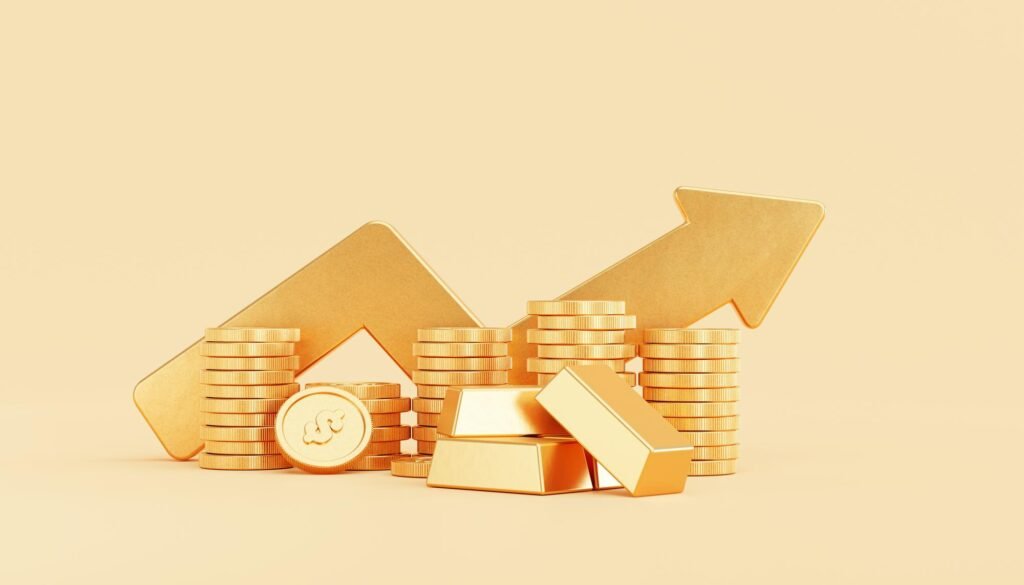Author : Dr. Kuppachi Sreenivas, Professor, DC School of Management and Technology
The federal government shutdown has surpassed 20 days, causing salary delays for over 1.5 million employees. This is a study by DC School of Management and Technology, the best Business School in Kerala. Shutdown and multiple factors are driving gold prices down in the short term. Historical data show gold prices tend to rise over long periods (78-100 years). Gold holds dual value: liquidity in tough times and long-term investment growth. Indian culture favours buying gold but discourages selling except in financial emergencies. Gold provides financial security for both the poor (emergency cash) and the rich (investment). Regular gold purchases on special occasions can yield long-term benefits despite short-term volatility. The other reason is the expectation that interest rates will go down if interest rates drop.

The US government shutdown has now become the longest ever, crossing 20 days. As a result, around one and a half million federal employees are not receiving their salaries. This makes it difficult for them to pay rent and EMIs. Due to this strain, the shutdown might soon reach a breaking point.
These combined uncertainties are also pushing gold prices down, and they may fall further in both the short and long term.
Gold is considered an international currency closely linked to the US dollar. If you buy gold today, your children or grandchildren will benefit from it. You can buy gold anywhere with full confidence.
Gold has risen in value in 78 out of the last 100 years. So, historically, gold tends to increase over time. But this is a long-term trend. Most people—especially in India—do not sell gold unless they face severe financial problems.
Gold provides two major benefits:
Liquidity: You can convert it into cash anytime during a crisis.
Long-term growth: Its value tends to increase steadily over years.
For people without much money, gold acts as an emergency fund. For wealthier individuals, it is a long-term investment.
A simple strategy is to buy one gram of gold every birthday, wedding anniversary, or Akshaya Tritiya. Over time, this builds a strong financial cushion.
Short-term gold prices are affected by external crises. Prices fluctuate, and experts advise against expecting immediate profits. Investors should adopt a patient, long-term perspective instead. Historically, gold has been reliable and acts as a hedge against inflation and global economic instability.
In India, gold has a dual purpose:
As wealth and status
As an emergency fund
Culturally, Indians buy gold to preserve wealth but rarely sell it unless they face financial distress. This behaviour makes gold both a symbol of prosperity and a practical safety net.
Low-income families: Gold acts as an emergency cash reserve.
High-income families: Gold is treated as a long-term appreciating investment.
This dual utility makes gold appealing to all economic groups.
Gold prices rise due to common and special factors.
Geopolitical, economic, and military uncertainties—like the Russia-Ukraine war and Middle East tensions—push investors toward gold.
Gold approaching $3500 internationally is unusual. In India, gold has never reached that level. Current global instability, especially from US policies, is driving prices higher.
Gold prices are tightly linked to the US dollar. A strong dollar pushes gold prices higher globally. A weak dollar stresses the US economy. Since India imports most of its gold, Indian prices follow global trends. Falling confidence in the dollar and political uncertainty are accelerating de-dollarization.
Foreign exchange reserves include dollars, euros, gold, and other currencies. Gold is the second-largest reserve asset globally. It has overtaken the euro. Gold forms 20% of global central bank reserves, historically very high. Central banks are buying gold due to dropping trust in the dollar.
High US interest rates usually attract global investors. But political pressure on the Federal Reserve is creating instability. Statements by Fed governors against US policies are reducing dollar confidence further.
Lower interest rates increase borrowing, raising money supply and causing inflation. Higher inflation pushes people to buy gold as protection. With global economic unpredictability rising, gold prices are being pushed upward.
With inflation rising and uncertainty continuing, gold demand remains strong. Prices may stay high. For now, the safest option for buyers is to wait and watch. In the DC School of Management and Technology, we have different courses, including taking a Master of Business Administration (MBA) is an option to learn more about finance and business-related fields.